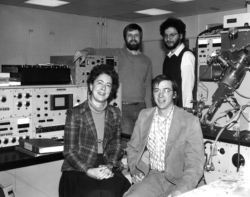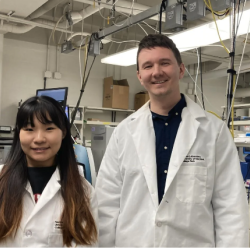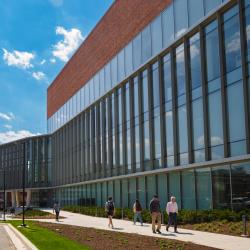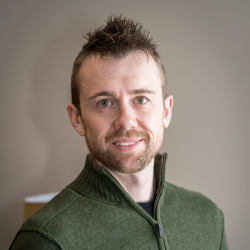Digging Deeper, Building Better: An Interview with Catherine Fenselau
Catherine Fenselau’s impressive analytical science career has taken her from ancient ruins in Colorado to the analysis of lunar rock samples, from the early introduction of MS technology to the biomedical lab, to the heady days of fledgling mass spec journals. Here, Catherine reflects on the past, present and future of mass spec and explains why analytical science deserves more respect.

When I was a child, I wanted to be a “lady archaeologist”. We went to Mesa Verde National Park many times on family vacations, and I thought the archaeology there was just wonderful. One of the big mysteries of the Mesa Verde ruins is where the people went; they had a tough couple of decades with drought, inter-tribal warfare and even cannibalism… Then, after 1,300 years or so, they all left. Where did they go? I thought it would be great to find out – form a hypothesis and then dig out the proof. And I suppose that’s what really got me thinking about being a scientist.
From titration to space station
As I got older I took the biology–chemistry–physics sequence that most American high schools provided around that time, but wasn’t sure which would be the best way to spend the rest of my life. When I got to Bryn Mawr College in Pennsylvania, I majored in chemistry – the curriculum captured my attention, but it was the engaging chemistry faculty who really hooked me in. Why not biology or physics? Perhaps I “titrated” myself into the right level of quantitation; at that time at least, chemistry was much more quantitative than biology, but physics was more quantitative than chemistry…
I was fortunate to work with Carl Djerassi at Stanford University for my PhD. And it just so happened to be one of the first labs to apply mass spectrometry to structure elucidation. You may know Djerassi’s name – he’s on the patent for the birth control pill – so you could say he changed western civilization. He was a natural products chemist, but also someone who really believed in the power of technology.
He had been impressed with Klaus Biemann’s success in applying mass spectrometry to undeciphered alkaloid structures. As someone interested in steroids, Djerassi wanted to use this fast, highly sensitive method to help elucidate steroid structures, so he got a mass spectrometer, hired two postdocs from European labs (where there were physical chemists using the technology) and, over the next two decades, took on 10–15 graduate students to develop the technology for his interests. I recognize a good opportunity when I see one.
In 1967, I moved to the NASA Space Sciences Laboratory for a postdoc with Melvin Calvin, where we practiced mass spectrometry techniques on rocks, in preparation for the analysis of lunar soil samples. NASA had a whole international consortium of labs to prepare for that project – and it seemed glamorous despite the analytical chemistry being pretty simple. Calvin and I published a paper in Nature (1), reporting on the behavior of olefins, and how they squeeze into the holes in model rocks. We were working with high-end equipment, which was exciting – it was a very successful experience for me. However, I only stayed two years before moving on to my own position. My father always told me I should have waited till the moon rocks came back…
My husband and I both received job offers from Johns Hopkins School of Medicine, so I packed up my cats (and my husband), got in the car and drove across the country to Baltimore, where I have been ever since.
This article was first published in The Analytical Scientist. To read more stories from the top names in analytical science, subscribe (for free) at www.theanalyticalscientist.com.






